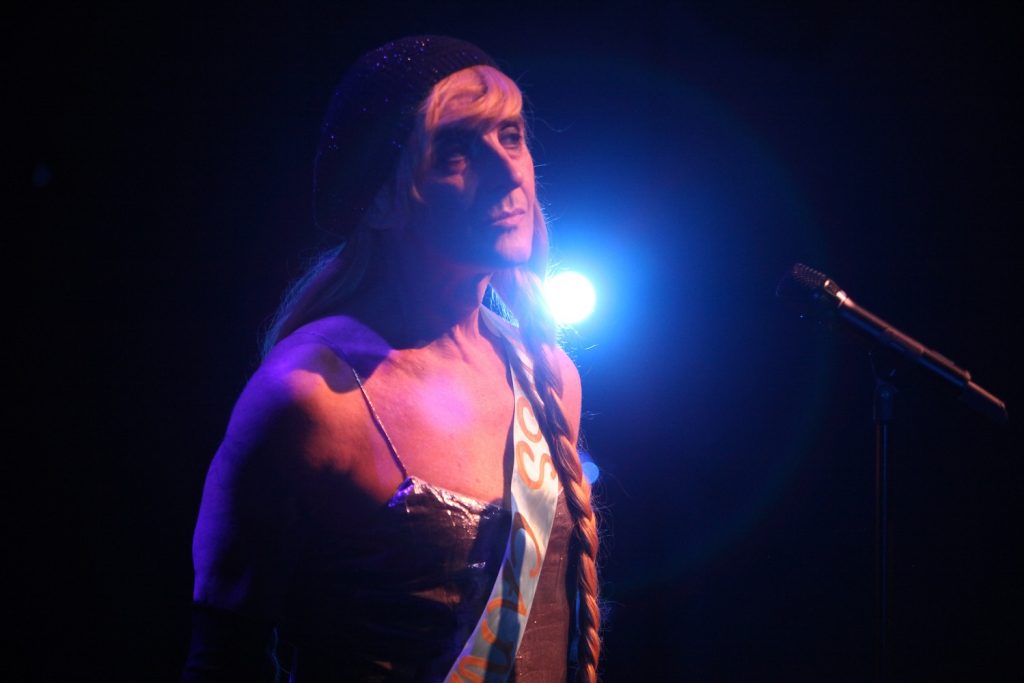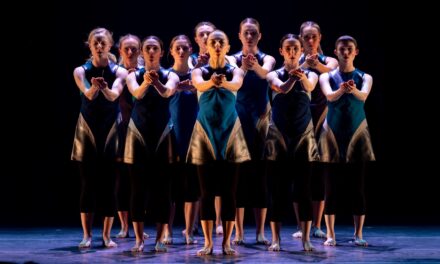John Kelly is an artist of many talents and genres. He is a writer, a singer, a dancer, a choreographer, an actor, a visual artist and a drag artist who creates complete fictional personae. Since gaining notoriety in New York’s East Village art scene during the 1980s, Kelly has been in the forefront of what has become known as performance art, continuing on to receive two Bessie Awards, two Obie Awards, two NEA American Masterpiece Awards, an American Choreographer Award, a Herb Alpert Award in the Arts (CalArts), a Visual AIDS Vanguard Award, and an Ethyl Eichelberger Award. His work has been presented at Lincoln Center, the Joyce Theater, La MaMa, the Walker Art Center and the Brooklyn Academy of Music, to name only some of the prominent venues that he has performed in over his nearly 40-year career.
On Thursday, April 25, 2019, Los Angles’ REDCAT (Roy and Edna Disney/CalArts Theater) was added to that long list of venues with a three-night run of an autobiographical work titled JOHN KELLY: TIME NO LINE. Perhaps because Kelly has become known for his avid activism for Gay Rights, the theater was sold out to an audience that consisted largely, but not totally, of members from the LBGTQ community. The subjects of his performance art, however, also include the Berlin Wall, the Troubadours (French medieval lyric poets composing and singing in Provençal in the 11th to 13th centuries), Expressionistic Film, and character studies based on famous people such as Joni Mitchell and Jean Cocteau.
TIME NO LINE did not pull me in at first, but by the end of the evening I was totally enamored with the way Kelly had woven his life’s story into an hour and a half of theater involving spoken word, film, video and projected images of his journals and other writings. He included footage of Rudolf Nureyev and Margot Fonteyn in the death scene from Sir Kenneth MacMillian’s ballet Romeo and Juliet while he executed pliés at an imaginary ballet barre and reminisced about his attempted ballet career.
Kelly sang along with a film of him performing and acting out an operatic aria. He drew designs and abstract self-portraits on the floor with white chalk, and later connected them with vivid red chalk that symbolized, for me, the blood and rage brought on by the death of so many men during the 19970s, ‘80s and ‘90s AIDS epidemic. Dressed in drag, Kelly visualized a painful memory of lost love by singing his song “The Last Time I Saw Richard”.
Several artistic symbols made brief appearances, while others lingered or remained. Near the beginning of the show, Kelly pulled a long braided red rope across the stage, only to leave it stationery and forgotten. At the end he pulled the rope back across and offstage, returning upstage to drag it behind him behind the hanging projection screen and off again. The line of time? Or perhaps a symbol of Kelly’s inner rage and pain caused by so many unfulfilled lives due to the HIV virus?
In one segment Kelly drew the outline of his body lying in different positions, each connected to the one adjecant. He spoke to how an entire generation of men, his friends and colleagues among them, were victims of the epidemic and that he was one of few who survived those years when the available medicines were not effective. It was from this pile of bodies that he somewhat frantically connected the rest of his story drawings with a jagged red line.
The evening moved primarily in a chronological order, but occasionally drifted backward into time to emphasize a point or to visualize a memory. When speaking on the subject of time, Kelly stated that it was not linear, and that he had come to believe that the past was simply a series of painful reoccurring memories.
Through his art, Kelly not only revealed his life’s story, his work, his many talents, his weaknesses and strengths, but he visually demonstrated how for most of us time loops back and forth through our minds, and then suddenly we become aware of its passing. He reminded us of the many great, or potentially great, artists whose lives were cut short during the era of AIDS; a disease that has been contained, but not defeated. Kelly questioned at one point in his life whether his activism belonged on the stage or out in the streets. Fortunately for us he chose the theater to be his platform of speaking his truth. This production of Kelly’s was an example of Performance Art at its very best.
JOHN KELLY: TIME NO LINE continues through Saturday, April 27 at REDCAT. For information and tickets, click here.
For more information on John Kelly, click here.
Featured image: John Kelly in Time No Line at REDCAT- Photo by Steve Gunther















